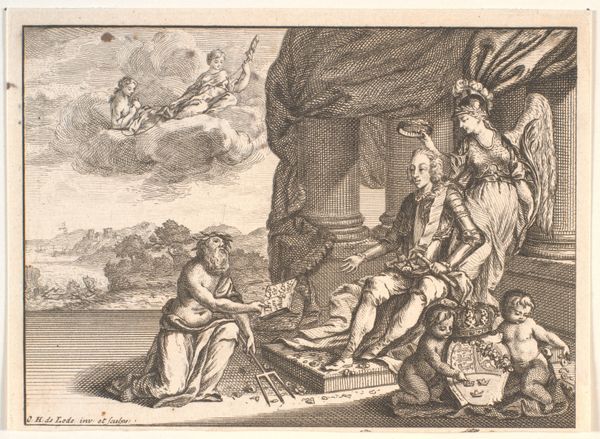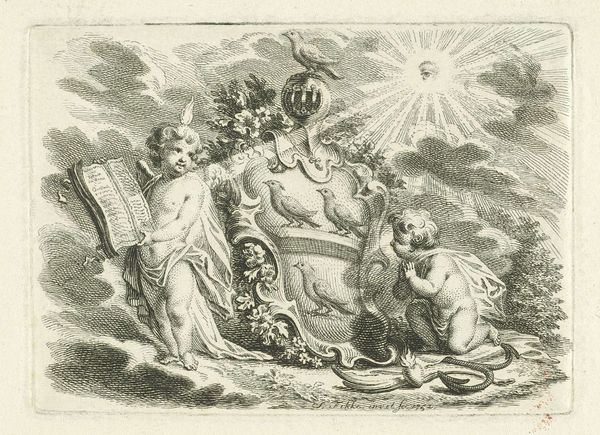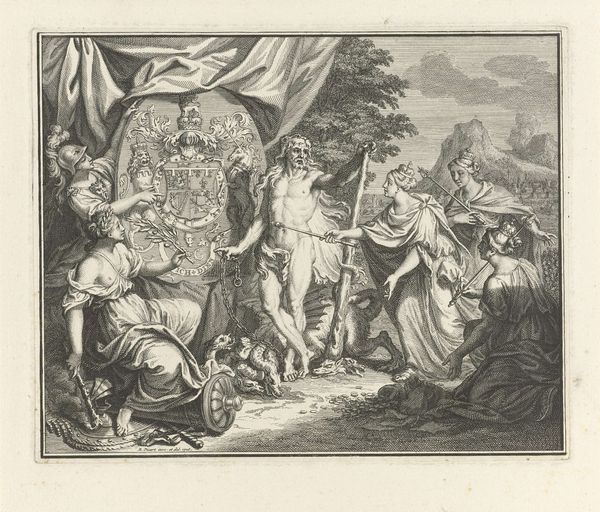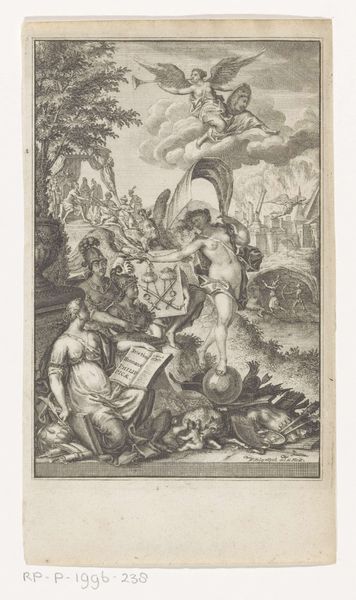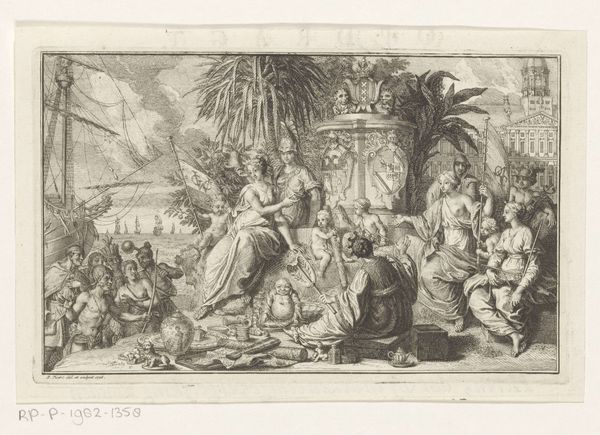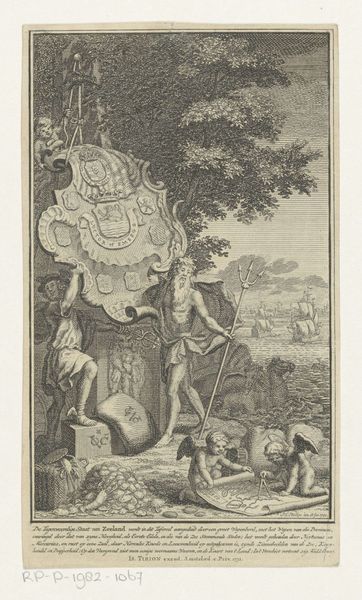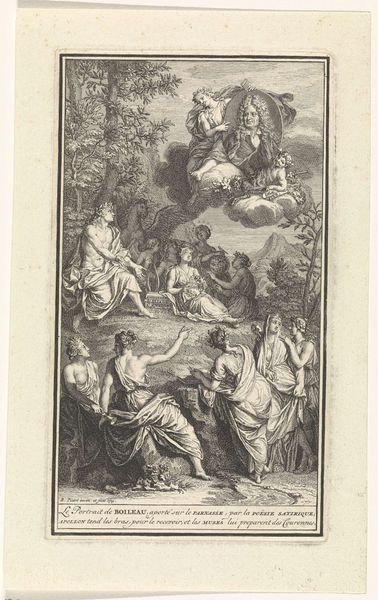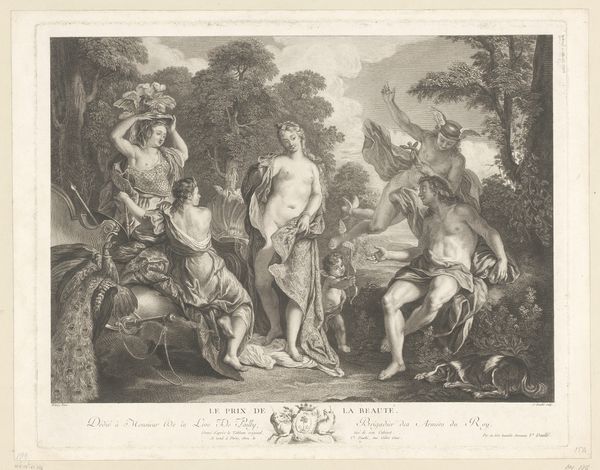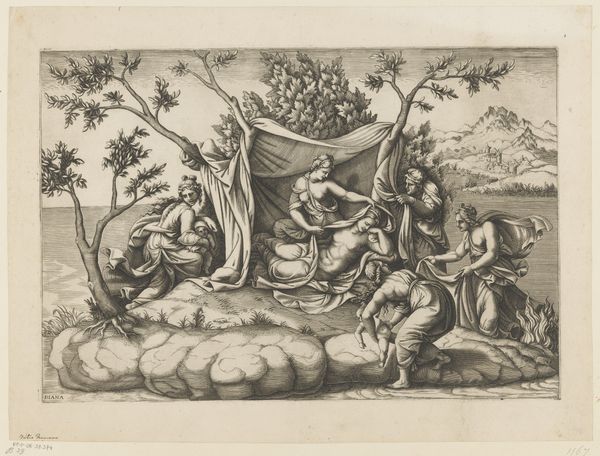
engraving
#
portrait
#
allegory
#
baroque
#
landscape
#
caricature
#
figuration
#
form
#
line
#
history-painting
#
engraving
Dimensions: height 156 mm, width 230 mm, height 233 mm, width 320 mm
Copyright: Rijks Museum: Open Domain
Curator: This engraving is titled "Familiewapen Van de Poll in allegorische setting" by Philip van Gunst, and dates somewhere between 1685 and 1732. It’s currently housed at the Rijksmuseum. My first impression? It feels so intricately constructed. Editor: It’s certainly a staged presentation, a very deliberate construction in ink and paper. The texture must come from the depth of engraving. Look at the light. Almost sculptural. Curator: Indeed. It’s a baroque allegory. Note how the artist deploys classical figures and symbols to honor the Van de Poll family's coat of arms. We see Justice with her scales, Athena with her helmet and spear, likely symbolizing wisdom and strength… Editor: All representing the values the family wished to project through the skilled labor of printmaking, intended for mass production and wide distribution! What better means to promote these desired associations? Curator: Precisely. The historical context is fascinating here. This work gives us insight into how families navigated their image and legacy within the social hierarchy of the Dutch Republic. The Van de Polls were a prominent family in Amsterdam. Editor: And an engraving was a savvy choice; more cost effective than painting, which really opened the art market. That precision of line must've demanded extensive training, requiring not only artisanship but a significant material investment in plates and tools. Curator: This speaks to the rising mercantile class asserting their importance through cultural patronage, shaping societal perceptions through visual means. Editor: Yes, the materiality informs everything here, the labor of the engraver meticulously crafting each line speaks to the growing demands of a capitalist society, while this very image became a commodity in and of itself. Curator: It gives us so much to consider about the complex relationship between art, power, and identity in 17th and 18th-century Netherlands. Editor: Absolutely. By thinking through its materials, its creation, we are offered insight into social forces driving families to promote themselves. It certainly casts a long shadow over practices even today.
Comments
No comments
Be the first to comment and join the conversation on the ultimate creative platform.
